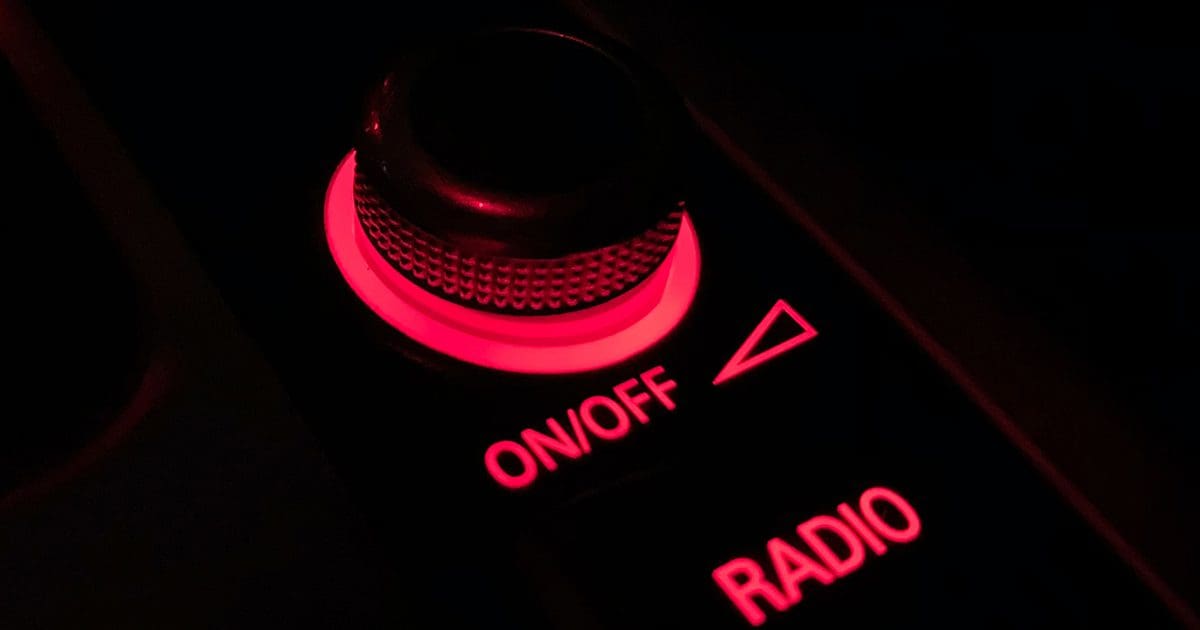When it’s time to discuss complicated car audio concepts, it’s common for people to glaze over the important small factors and considerations. In the context of car audio amplifier preamp signals, everyone seems to get hung up on how much voltage a radio can produce or an amplifier can accept. What matters in terms of optimizing the performance of a car audio system’s performance is ensuring that the entire system’s gain structure is correct. Let’s look at gain structure and why it matters so much.
What Is Car Audio System Gain Structure?
In the simplest of terms, gain structure refers to the adjustment of the sensitivity controls on an amplifier that determines how much of the input signal is amplified. In a simple system with just a radio, the radio manufacturer determines the amplifier’s internal gain relative to the preamp signal. You’d think it would be a simple calculation, but in reality, a few factors complicate the process.
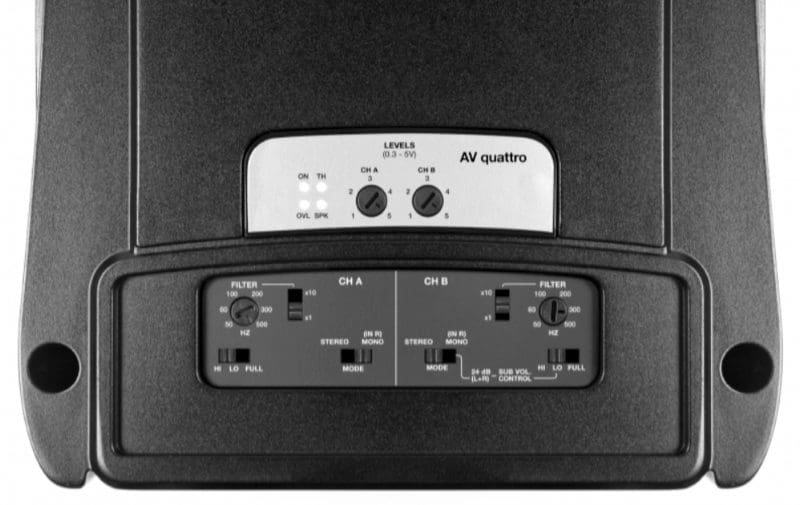
When I review source units for Test Drive Reviews, I use a set of test tones to determine the volume level at which the built-in amplifier reaches its maximum output capability. Let’s say a radio has a volume control that’s adjustable from 0 to 50. In most cases, the built-in amplifier will reach its maximum output at around 32 when playing a tone recorded at the highest possible level (0 dB FS). Why wouldn’t they design it to reach maximum power at 50 out of 50? Well, there’s a chance the music you are listening to isn’t recorded with the peaks at 0 dB FS. The radio needs extra volume so that quiet music can be played loudly. We call this gain overlap. Modern music is processed to have a much higher average level, so this matters less these days. With that said, some amount of overlap is required.
The drawback of including gain overlap is that consumers still think that full volume is 50/50, and they ignore the fact that their music started to distort back when the volume was at 33 or 34. The result of overdriving the amplifier is the production of significant harmonic distortion that sends large amounts of power to tweeters, usually resulting in their destruction. We call this phenomenon clipping. This situation can be particularly hard on speakers when high-power aftermarket amplifiers are connected to the speaker outputs of a factory-installed source unit.
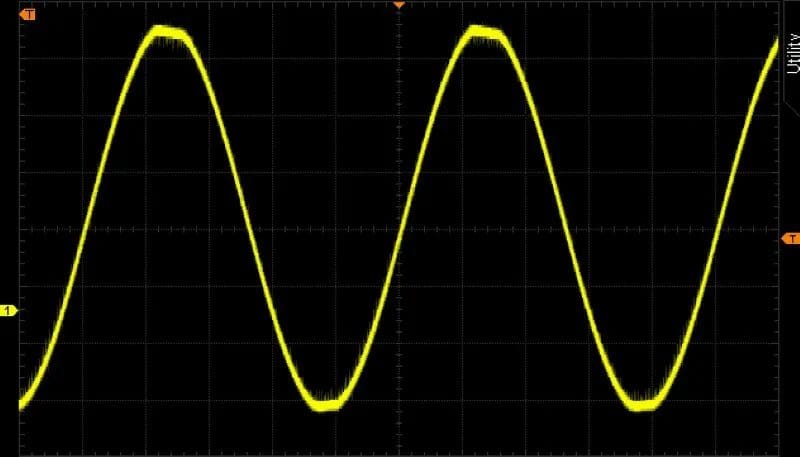
Too Much Gain Is Bad
I recently talked to a car audio enthusiast with a high-quality DSP-equipped amplifier in his vehicle. They’d had someone with calibration experience set up the amp for them. The output level adjustments were quite high, with 6 to 7 dB of boost on the midrange and midbass channels and 10 dB of gain on the subwoofer outputs. Anytime I see a system with the amplifier sensitivity controls turned up significantly, there’s a simple test that can be implemented to confirm the system’s gain structure. I asked the person to tell me what volume level on their radio they used to listen to music at normal levels and loud levels. The answers were 25 and 28 out of a possible 50.
This information shows that there is likely too much gain configured in the amplifier. I suggested turning down all the output level settings by six dB, then turning up the volume on the radio to the same perceived output level. Since it’s just settings in the software, the test was simple. Not 15 minutes later, I was told that the background noise in the system had been reduced and that the system seemed much more dynamic. So, what happened, and why did things improve?
Source Unit Noise and Amplifier Preamp Signals
An amplifier doesn’t know the difference between noise and music. No matter the design, every source unit produces some amount of noise in the output. We usually detect this as hiss, and it’s similar to what we’d hear if we tuned to an FM radio station frequency that didn’t have anything broadcast on it. I measure the addition of noise as the signal-to-noise ratio of the product I’m reviewing. If a radio is playing a 1-kHz test tone, and the noise in the output is 85 dB quieter than the amplitude of the test signal, then the radio has a signal-to-noise ratio of -85 dB. Larger numbers, or more specifically, more negative numbers, are always better as they mean the noise level is lower relative to the audio signal. The measurement below has a signal-to-noise ratio of 85.66 dB in the left channel and 85.67 dB in the right.
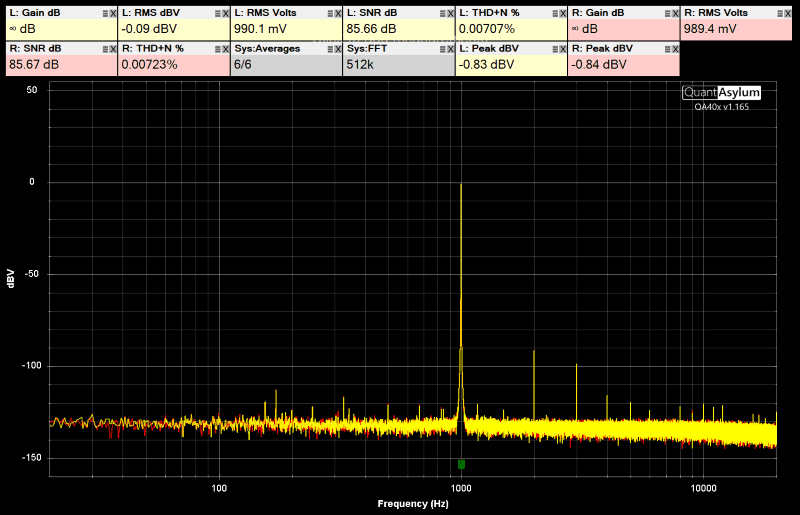
If an amplifier is configured to produce 35 dB of gain, a radio with a signal-to-noise ratio of -85 will have that noise boosted by 35 dB. Too much gain can make noise clearly audible.
The other problem with having the volume on the radio low and the gains high on the amplifier is that music information can get buried in the noise produced by the radio. Remember back to the beginning of the article when we talked about people getting caught up in how much voltage a radio can produce? For a radio to produce its maximum voltage, the music typically needs to be recorded at the highest possible level (0 dB FS), and the volume on the radio needs to be at or very near its maximum level (50 on our hypothetical radio). This doesn’t happen often.
So, how much voltage is on the preamp output signal with the volume at 25 out of 50? I just had a high-quality radio set up on my test bench for an upcoming review, so I measured the output. With a 0 dB, 1-kHz test tone, the radio produced a preamp output voltage of 0.111 volts with the volume at 25 and 0.157 with the volume at 28. That’s with a test tone. The signal-to-noise ratio of the radio with the volume at 25 was -74.7 dB. The background noise level is relatively constant. These are impressive performance measurements. An inexpensive radio wouldn’t fare as well.
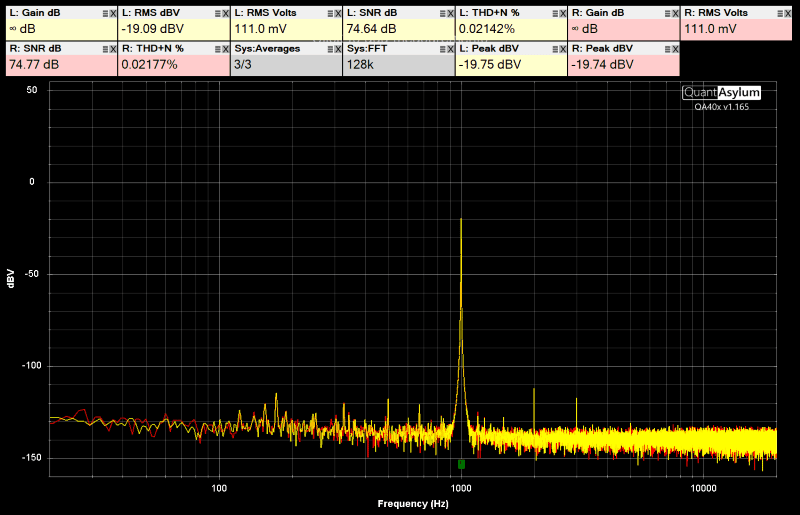
Proper Gain Structure Matters
If you’re having an amplifier installed in your car or truck, be sure to choose a shop that has the tools and training to ensure that all the settings are optimized to deliver the best possible performance. If you’ve chosen good quality equipment, you should be able to turn the volume on your radio up pretty high (assuming it doesn’t distort), and the system should remain clear and sound great. If the amplifier preamp gain isn’t correct, the performance of your system might suffer.
